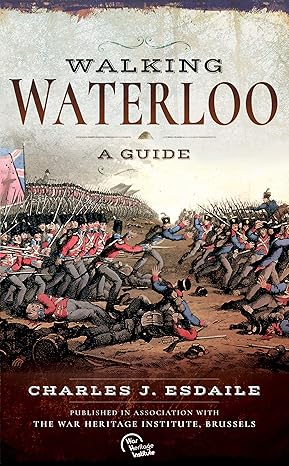The Genius of Sweden's "Lion of the North"
By Steve Wilson
In the skies over a modern battlefield a joint tactical air control team is often credited for carrying their platoon's “big gun,” or radio, as devastating airstrikes are vectored in from aircraft loitering in the battle space where friendly forces are taking fire.
Laser guided munitions, global positioning systems, joint direct attack munition technology and real-time communications make it possible for military units to shape the battlefield to their advantage.
However, coordinated efforts on an ever changing fluid battle space aren't new concepts. In fact, credit for this military innovation, and several others, belongs to Gustavus II Adolphus, King of Sweden, whose reign lasted from October 12, 1617 until his death in battle, Nov. 6, 1632.
The Innovations
The period of warfare before Adolphus' time lacked what in today's terms could be called strategic thinking. Granted, there were great generals and great battles, several of which changed the known world. But, until gunpowder began to see widespread use, armies were marched directly toward an opposing force, drawn in parallel lines and the order of battle tended to consist of: archers, followed by the heavy infantry that hurled javelins as the masses continued to creep toward each other until finally the armies were in sword, hammer or pike range.
The only real fluid part of a battle space prior to gunpowder was the cavalry, which were usually concentrated on the flanks and, when possible, charged the enemy's extreme left or right and hoped to collapse the opposition around itself.
As gunpowder began to see common and widespread use on the battlefield, Gustavus Adolphus was the first to shed old tactics and status-quo thinking.
In Adolphus' time, firearms were just beginning to make their way into the hands of both heavy infantry and cavalry.
Another relatively new invention, gunpowder propelled artillery, changed the scope of the battlefield by shifting the range at which armies could engage one another as well as a constant need for specialized war material – chiefly powder and shot.
Armies could no longer move quickly and largely rely on foraging for raw materials to construct siege and artillery equipment.
But, until the new-age thinking of Gustavus Adolphus, the technology had changed but tactics and strategy had not.
Warfare, around the time of the Thirty Years War, was on the cusp of becoming more specialized and calculated, rather than an affair where two huge forces collided and the winner was decided by large amounts of courage and the ability to deal harsher blows about the head and shoulders to the enemy.
It was during this period of time in military history that Gustavus Adolphus would shatter the old school system of waging war.
Prior to Adolphus emerging on the scene as a battlefield innovator, European armies largely conscripted soldiers or employed large numbers of mercenaries just before marching to their objective. After the war, these conscripts and soldiers for hire were quickly mustered out of the army until politics demanded the nation fight another battle.
Gustavus Adolphus threw a wrench in 1600s European thinking by having a regular standing army that was well-trained, regularly drilled, armed with fine weaponry and were paid on time.
He also redesigned his army to take advantage of newly acquired mobility that was afforded to him by the emerging innovation of gunpowder and modern firearms. While the European army model largely consisted of forming squares or, even older, lines of phalanxes several soldiers deep of mixed musketeers and pikemen, Adolphus formed whole regiments solely of musketeers.
He also adopted a new, lighter musket, thus eliminating the need for the gunner or an assistant to carry a forked pole to rest the firearm on.
He made paper cartridges standard in his army.
He also drilled his men in the concept of rolling volley fire.
This innovation was a regiment of musketeers, usually six lines deep that closed to three before engaging the enemy.
The first rank would kneel the second would crouch and the third rank would stand all firing simultaneously.
The rate of fire Adolphus was able to maintain on a battlefield surpassed other armies of the time largely because the Swedish king reduced the traditional European manual of arms from 160 movements for firing and reloading to 95.
Adolphus disregarded the big, cumbersome cannons favored by many leaders of his day and opted for lighter and maneuverable field-pieces that could be quickly moved to give fire where his infantry needed support at a particular time.
This is a stark contrast to other European army models of the day, who fought in dense, slow maneuvering masses and tended to try to win a battle by numbers and brute force alone.
In this way, he ensured his portion of the battle space was not rendered static and motionless by fixing big artillery pieces in one spot that could not be maneuvered to support the foot soldiers.
Another innovation was a concept that today is dubbed “combined arms,” although in the 1620s the term didn't exist. Gustavus Adolphus disregarded traditional pike squares common in European formations of the time and instead incorporated a thin pike wall in with his musketeer formations.
This innovation featured one pike for every few muskets, which was enough to keep enemy cavalry from decimating the infantry but still leaving the Swedish formation plenty of firepower to engage the enemy. Adolphus used this tactic until 1631, when he formed entire regiments comprised of nothing but musketeers.
The Swedish king also developed what today we call “cross-training.”
Infantry and cavalry units alike were trained to fire artillery. His pikemen could pick up a musketeer's weapon, load and fire it if need be. Artillery and infantry soldiers were all trained to ride, should the battlefield occasion demand it.
In doing this, King Gustavus Adolphus ensured sub-unit integrity and unit cohesion throughout his army. The cavalry were not elevated above the infantry; rather, every soldier was cross-trained into other specialties to make for maximum efficiency on a fluid battlefield.
While King Gustavus Adolphus can be given scores of credit for innovation and forward thinking, the real measure of any commander is results in battle. This begs the question, how well did this new mode of combined arms work on early 17th-century battlefields? We will examine his most important battle.
The Results of Adolphus' Innovations: The Battle of Breitenfield
Gustavus Adolphus of Sweden entered the Thirty Years War allied with the Protestant cause. He established lines of communication and supply with his native Sweden and moved across the Baltic Sea and into the heart of Europe in 1630.
Adolphus, trained in statesmanship all his life before assuming the throne, began to build alliances, recruit more soldiers to the Protestant cause and secure his lines as he moved toward Saxony. He met his chief rival, Johann Tserclaes, Count of Tilly and commander of the Catholic League's armies, on September 17, 1631.
King Adolphus deployed his force in conjunction with his new and innovative strategy of stressing attack over defense and mobility over static lines.
He mixed his force of light and heavy infantry, dispersed with his pikemen throughout the formation to provide defense against enemy cavalry. He also deployed his light, nimble artillery consisting of three-pounder guns with his infantry instead of the old tactic of placing the infantry in front of heavy, difficult to move cannon.
In this, he assured the cannon could directly support the infantry and be quickly moved where supporting fire was needed most along an ever changing and fluid front.
The Count of Tilly's forces were deployed in a typical European, and largely static, formations.
The troops were packed together in tight squares and were mostly heavy infantry armed with pikes. The Catholic League's forces did have musketeers, but these were either placed in the corners of the formation squares or largely on one side. Thus, shifting fire from one direction to another involved a slow and cumbersome series of movements.
This formation did not, unlike the Swedes, incorporate supporting artillery directly with the infantry.
Both armies had cavalry units.
The Count of Tilly's forces were trained to ride toward the enemy, fire cumbersome and short range pistols in a maneuver called the caracole, in which the rider closed to firing range and executed a half turn and fired one pistol, then executed another half turn in the opposite direction and fired his second pistol.
After this volley the rider would canter tow the back of the formation to reload and fire again.
However, this tactic would be hard pressed to work under constant repeating volley fire from Adolphus' formations.
The Swedish cavalry still relied on the age-old tactic of riding at a full gallop and engaging the enemy with the saber; however, Gustavus Adolphus had trained his musketeers to provide fire support to the cavalry prior to a charge when at all possible.
When the two forces met, the Catholic League's army was deployed into 17 dense square formations with the heavy cannon placed in the front.
King Gustavus Adolphus' forces were deployed in two lines, with the bulk of their cavalry on the right side.
The two armies began with an exchange of artillery fire and it was soon obvious the Swedish gunners could achieve a far superior rate of fire with their light, three-pound guns.
The Catholic League forces cavalry charged the Swedish lines a total of six times, but each time was stopped by the combination of musket and cannon fire from Adolphus' forces. Finally, after the seventh and final charge by County Tilly's cavalry was beaten back yet again by the Swedes, King Gustavus Adolphus released his own cavalry against the enemy.
The already weakened Catholic League cavalry units were driven from the field by Adolphus' cavalry and retreated 15 miles from the battlefield.
Seeing the Swedish cavalry leave the lines, Johann Tserclaes, Count of Tilly, ordered his remaining cavalry and infantry forward. The Swedish lines on Adolphus' left flank began to falter under this combined attack without cavalry support.
Seeing this, King Gustavus Adolphus, thanks to his innovations of mobility, quickly shifted his lines and anchored along a new front to meet the Count of Tilly's advance.
The European square tercio could not quickly shift to face this new front and were heavily fired upon by Adolphus' light cannons and musketeers.
The shift in lines and new front made Adolphus' far right flank unopposed and he personally reformed them and led them in a charge into the Count of Tilly's forces and thus captured the enemy artillery.
Taking advantage of his forces being cross-trained, King Gustavus Adolphus began to use the enemy's own artillery against him and fired repeatedly into Tserclaes' exposed flank and rear.
This quickly led to the Catholic League's forces being engaged on multiple fronts in a harrowing crossfire. Not able to withstand overwhelming firepower with no possibility of a counterattack, the Count of Tilly's forces retreated.
As day turned into nightfall, it became clear the Count of Tilly's force was all but annihilated. Several of the survivors deserted and some 6,000 were captured, many of which joined Gustavus Adolphus' army.
The Aftermath
The Battle of Breitenfield was the first and most important of King Gustavus Adolphus' short career. It annihilated the Catholic League's main fighting force during the Thirty Years War and necessitated for it to be rebuilt.
His tendency to personally lead the charge, which was certainly a factor in his death at the Battle of Lutzen in 1632, is perhaps the only reason he did not emerge on the world's stage as a significant figure in Europe's course after the war's conclusion in 1648.
However, his contributions to modern warfare were such as attack emphasized over defense, sustained rate of fire, combined arms tactics and the value of cross training fighting units have been validated time and again on the globe's battlefields after the 1600s.
His innovations and models have been admired by Napoleon, Carl von Clausewitz, and General George S, Patton.
Sweden has not forgotten her “Lion of the North,” as each Nov. 6 is celebrated as Gustavus Adolphus Day.
| * * * |
© 2025 Steven Wilson.
Written by Steven Wilson.
About the author:
Master Sgt. Wilson holds two associate degrees, a bachelor’s in World Military History and an MBA in International Business. He is a graduate of the Air Force Museum’s Director course and the former director of the S.D. Air and Space Museum. He is married and enjoys exploring historical sites and museums, the outdoors, motorcycles and international cuisine.
* Views expressed by contributors are their own and do not necessarily represent those of MilitaryHistoryOnline.com.





